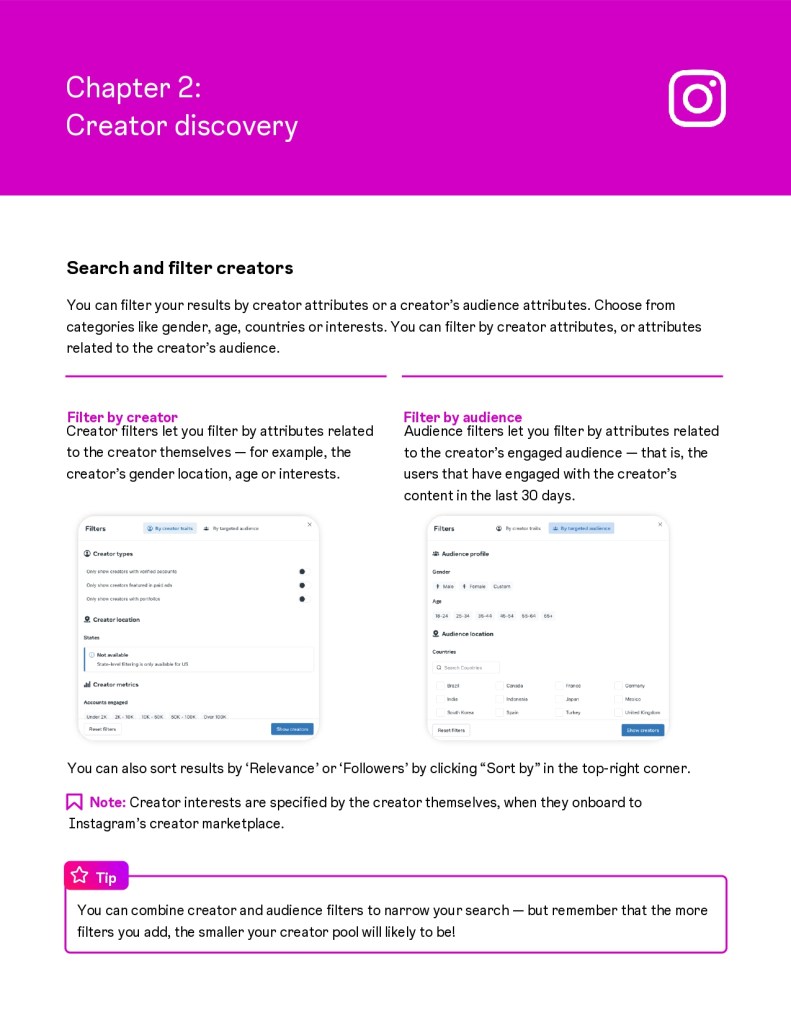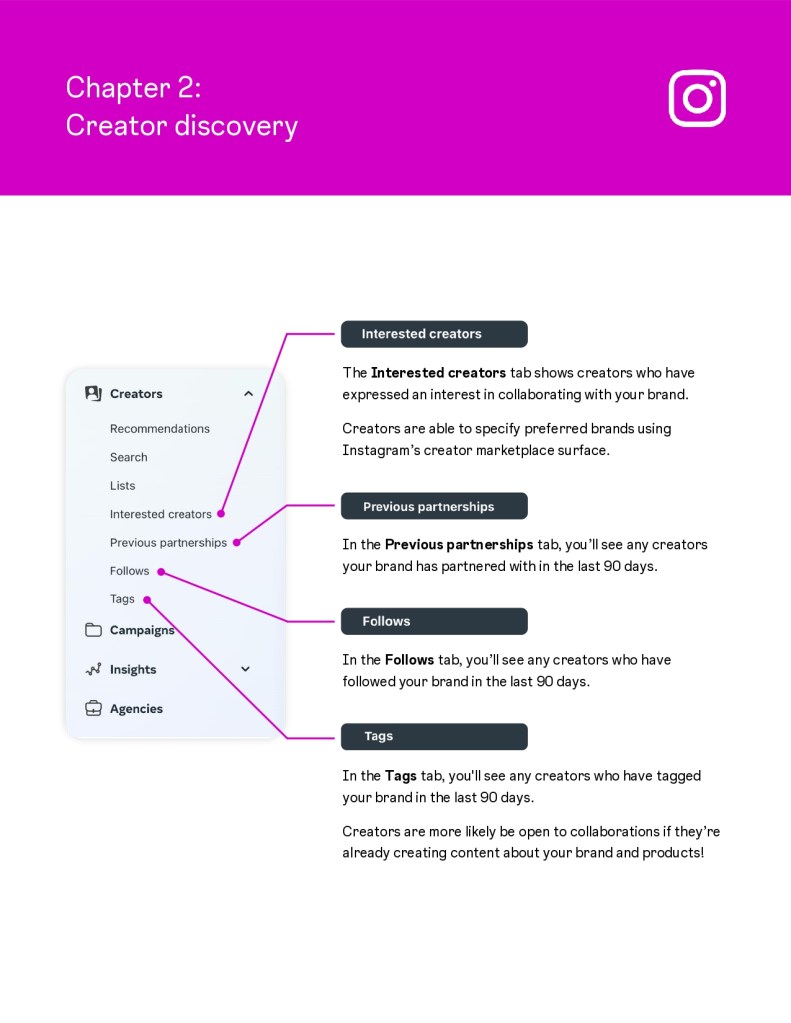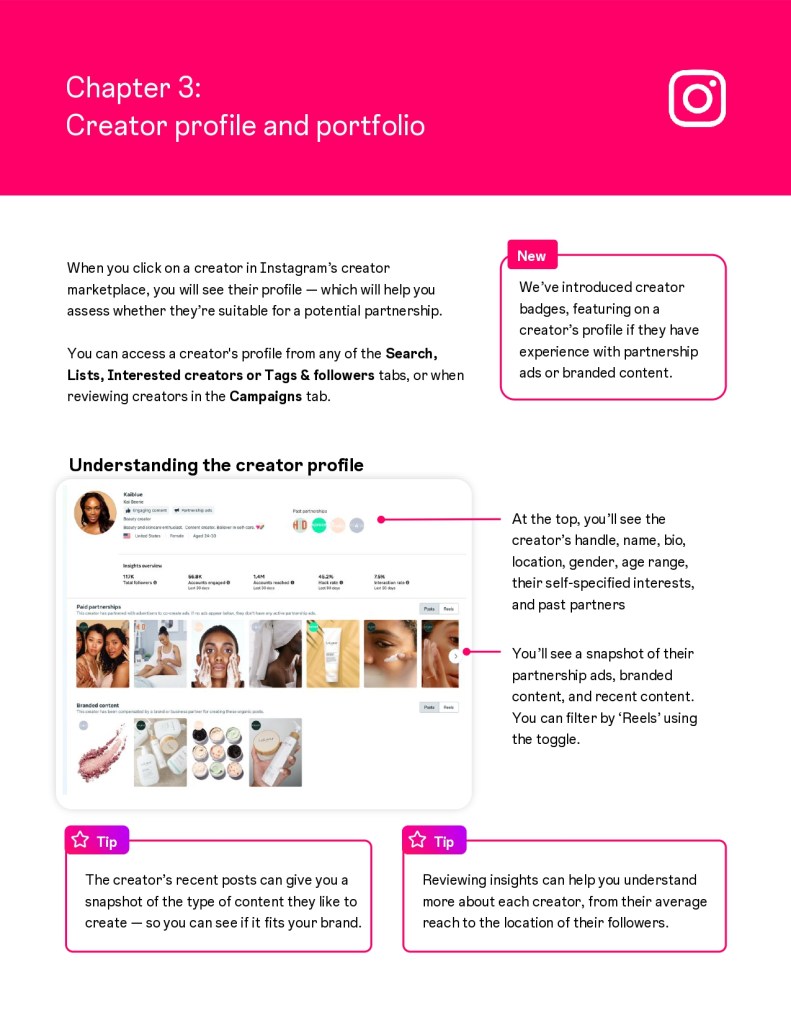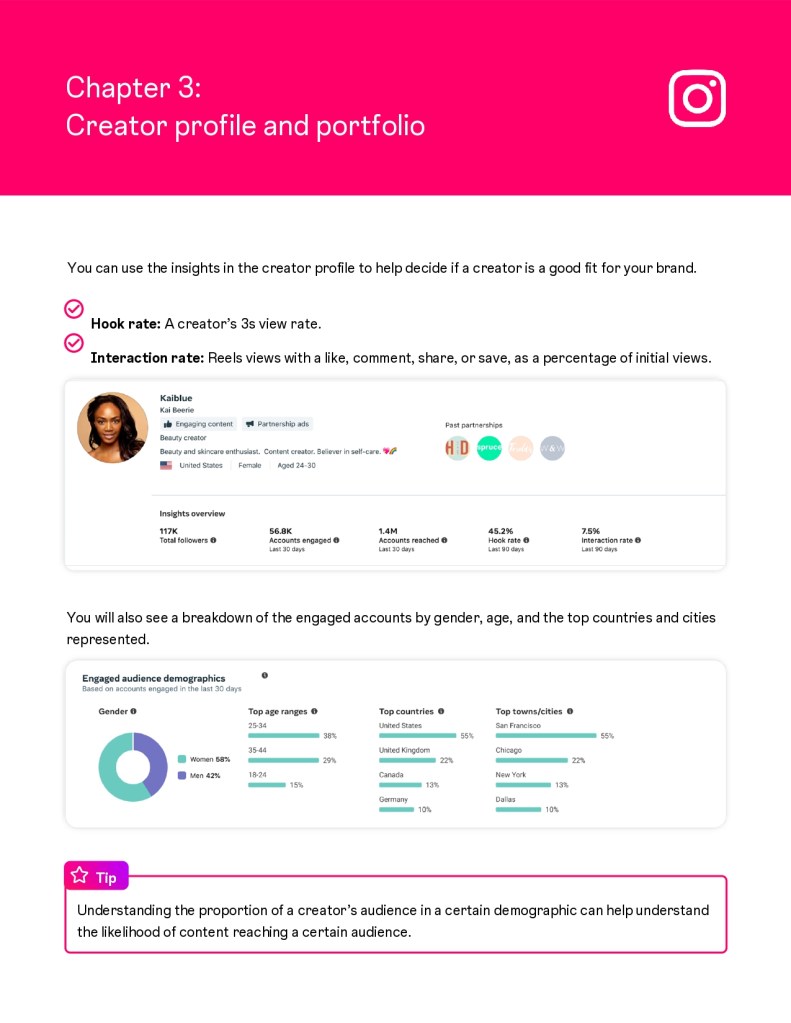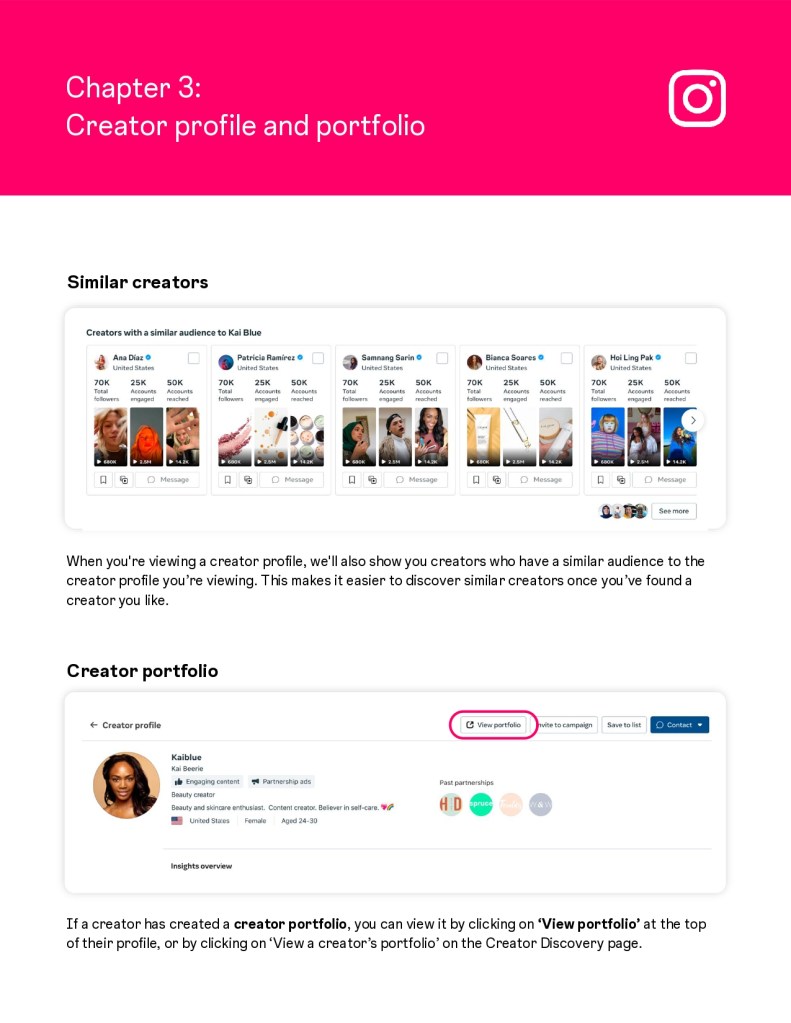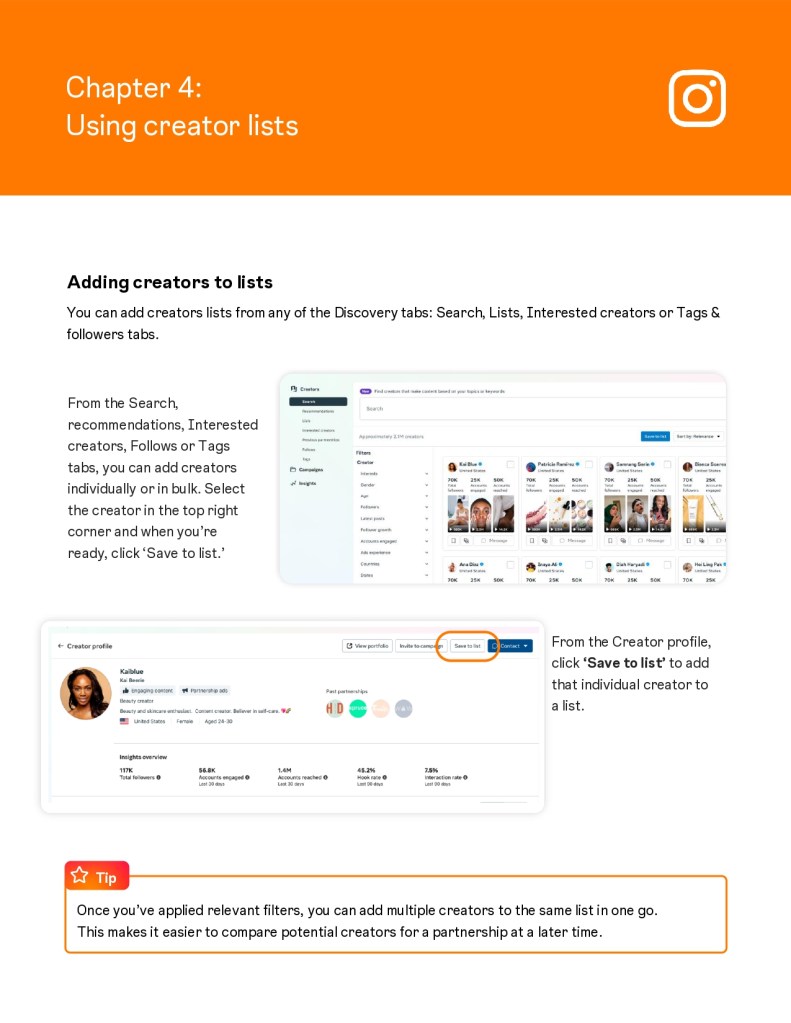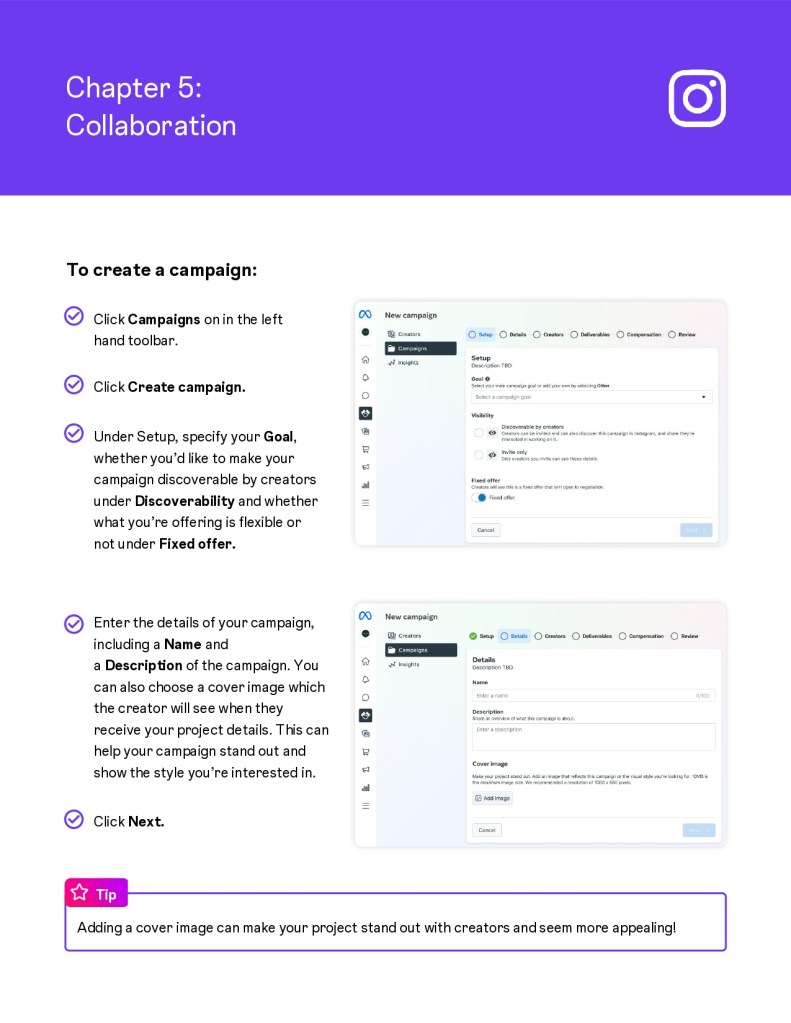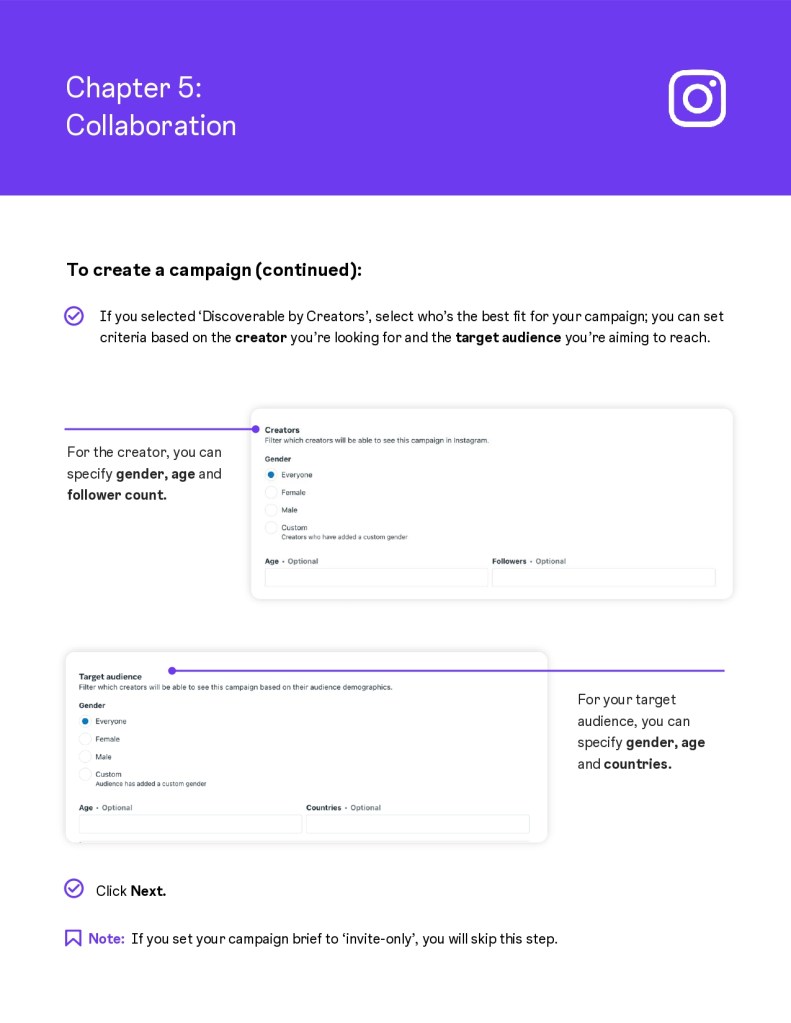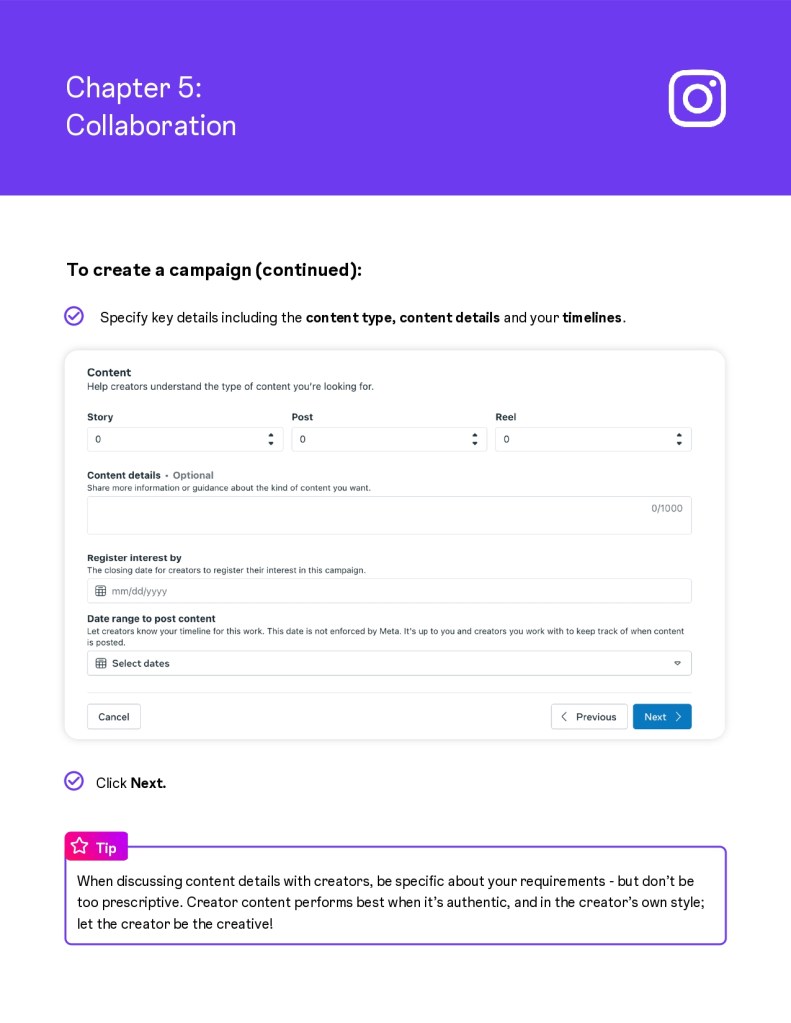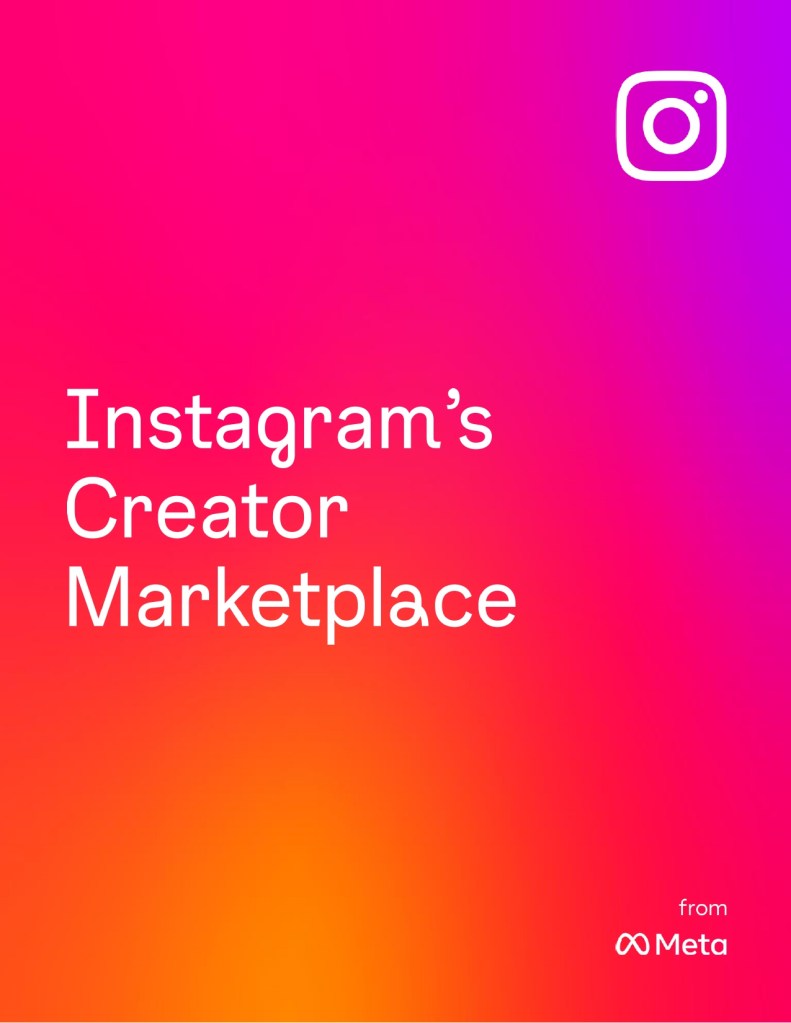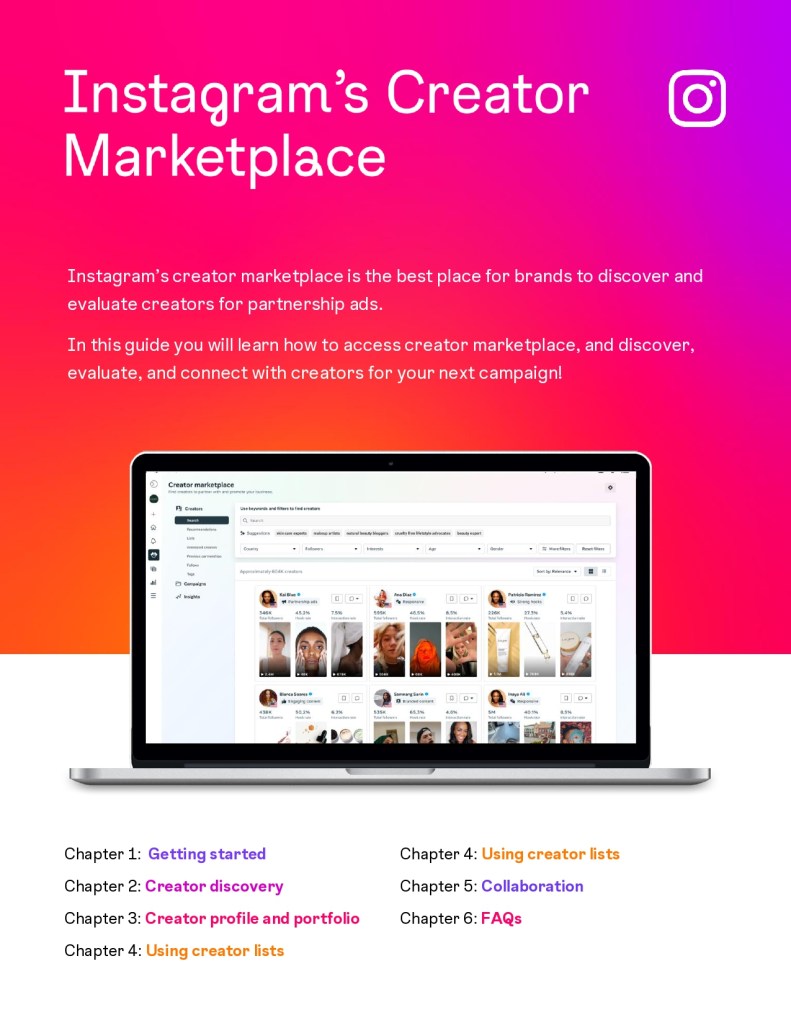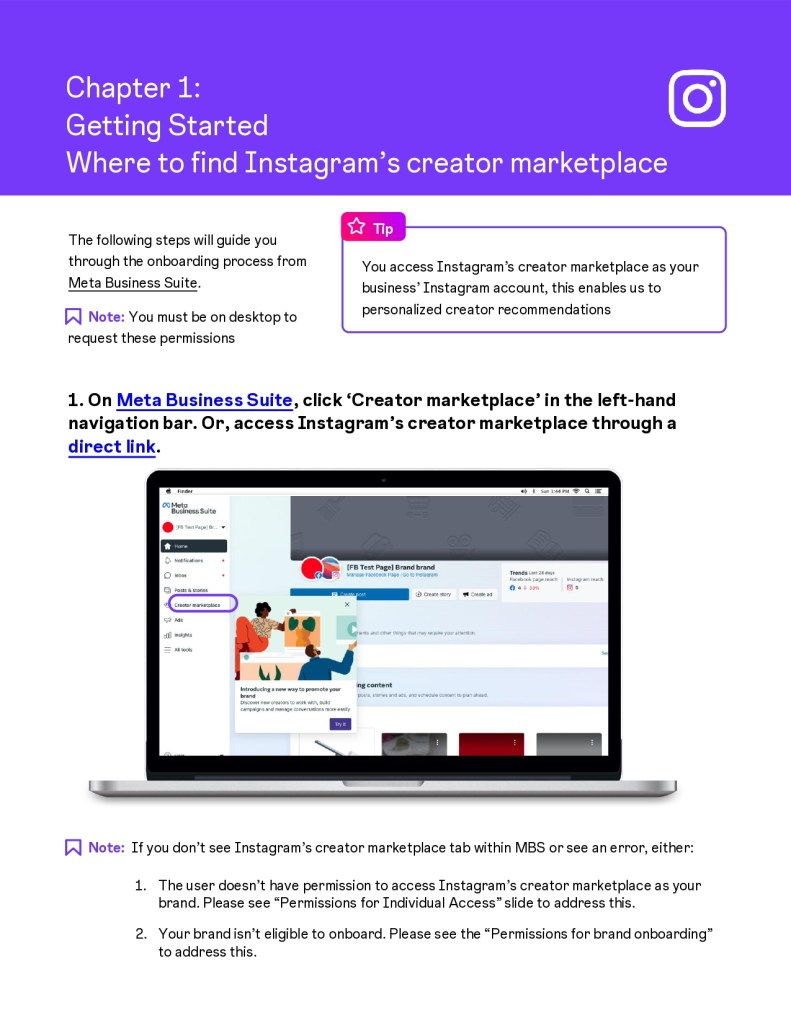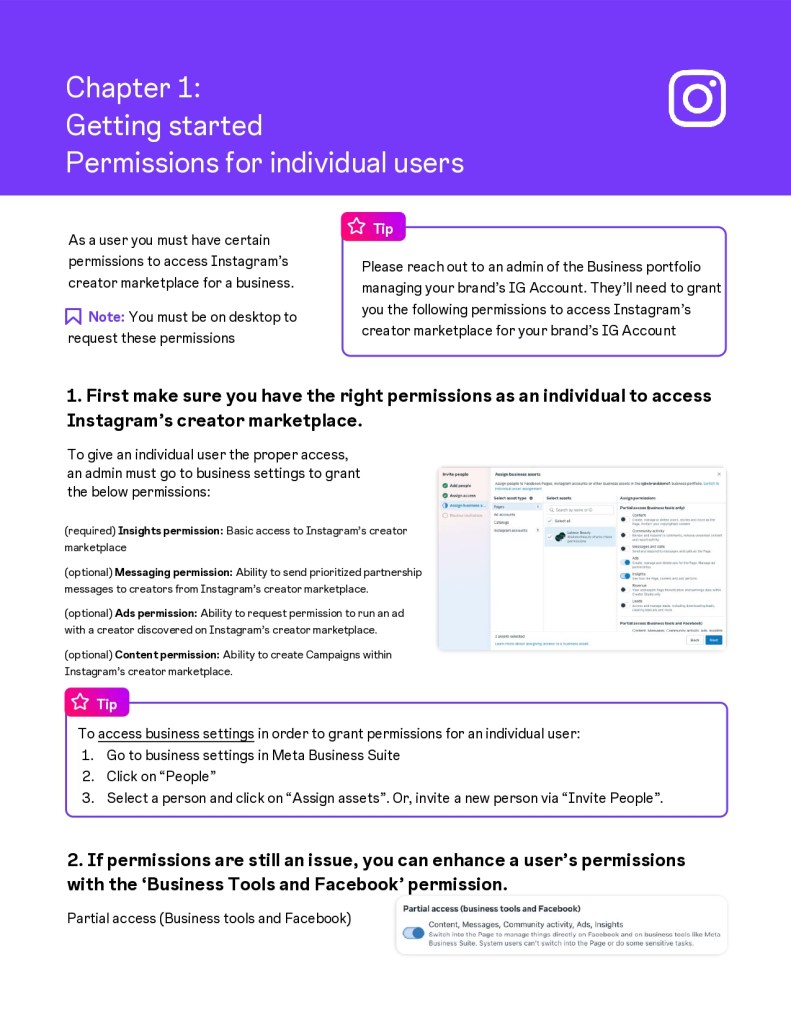Instagram offers a new guide to advertisers to convince them to try out its creator marketplace
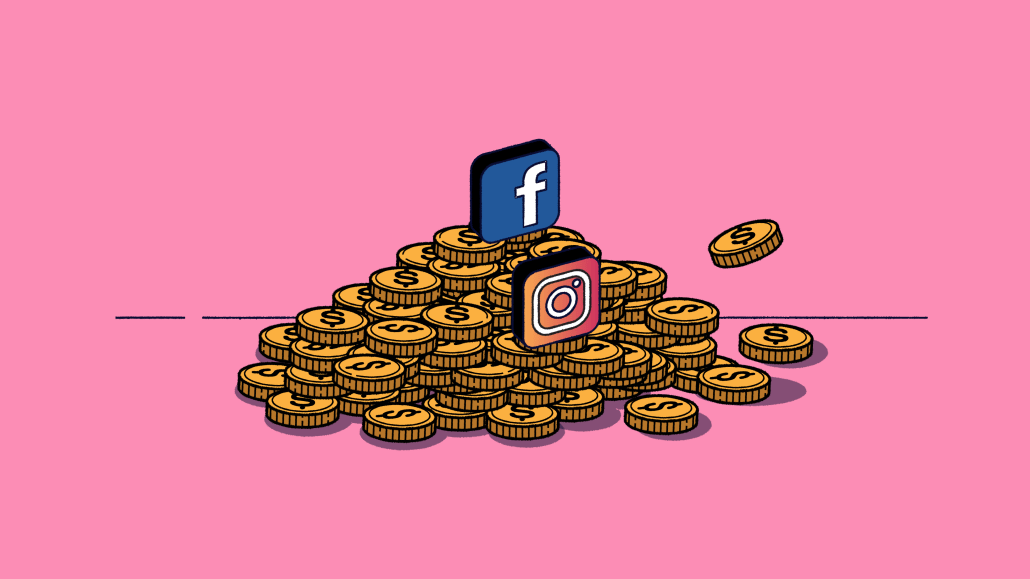
Instagram is ramping up efforts to drive interest in its Creator Marketplace with a brand new, 26-page how-to document for marketers — aimed at making the whole process quick and painless. All they need is a business account and access to Meta’s business suite to get the ball rolling.
In July 2022, Instagram started testing its initial marketplace feature, but it was only available on an invite-only basis to select business and creator accounts. Three years later, the image-based platform has opened the doors to what the set-up guide describes as “the best place for brands to discover and evaluate creators for partnership ads”. As the guide states: “you will learn how to access creator marketplace, and discover, evaluate, and connect with creators for your next campaign.”
Having seen the importance of creators to Instagram, it’s no surprise that Meta wants to go one step further and make the collaboration between brands and creators as seamless as possible. And it probably helps that the feature helps keep Instagram in line with its main platform competitor TikTok and its own creator marketplace.
“It [the new Creator Marketplace] looks like Meta’s built-in competitor to UGC sourcing platforms like MiniSocial and others,” said Chris Matheson, media director at Markacy. “I could see this evolving into a primary tool for influencer discovery, outreach, and collaboration.”
Similarly, Steven Lammertink, founder and CEO of The Cirqle, said that from his perspective, while TikTok’s Creator Marketplace is further ahead than Instagram’s version, simply because it’s been around longer, Meta is “getting there.”
“The only reason we’re not currently integrated with Instagram’s Creator Marketplace is because we’re not a U.S.-based business,” he said, noting that right now his team is part of Facebook’s Creator Marketplace, which is in alpha, currently only available in the U.K., U.S. and Canada. “I’m working on getting integrated with the Instagram Creator Marketplace soon.”
Following its set-up steps, the document, which was shared with Digiday, talks through four ways marketers can use the marketplace to find the best creators to partner with:
- Recommendations and search — which lean on Instagram’s AI-powered algorithm. The former, presents creators which Instagram thinks might be a good brand fit, while the latter enables marketers to either use keyword search or the platform’s AI-powered search recommendations.
- At the same time, the Interested Creators presents creators who have expressed interest in working with a brand, while the Follows and Tags tabs shows creators that followed the brand’s profile or tagged it in their content.
The guide’s next section talks advertisers through navigating creator profiles and portfolios, which allows them access to a wealth of information to see if they’re the right fit. From metrics like followers and audience demographic as well as an overview of their partnership ads, branded content and recent content — almost like a showreel.
Then we come to creator lists. The whole point of this tool is to make advertisers’ lives easier — not more manual or complicated. And what better way than being able to compile lists of creators they’ve come across through the marketplace, all in one place, in a comparable table, if you will. Lists can be created and customized and shared among admins on the account.
The final chapter of Instagram’s Creator Marketplace guide talks advertisers through collaboration. Brands have the option to create a campaign and house all creator content for that specific campaign under one umbrella. Advertisers which are part of the marketplace will also have access to the new partnership messages inbox — like Instagram’s own direct messages — where creators can reach out directly to build that relationship.
And in a nod to YouTube’s recently launched Open Call feature, within Instagram’s Creator Marketplace, advertisers can build out a brief which they send directly to creators they’d like to work with, or a brief that’s “discoverable by creators”. Within the latter, advertisers can give details on the type and volume of content needed, and a deadline for them to submit their interest. For those creators who are successful, advertisers can be specific about exactly what compensation they’re willing to offer — whether it’s monetary payment, free products, or if they’ll get an added bonus payment (if agreed) for boosting their content.
Still, just because it’s an Instagram Creator Marketplace, that doesn’t cut advertisers off from Facebook.
“Instagram ads also run through Facebook pages of the creators,” said Limmertink. “Meta wants advertisers to have all these different avenues and channels they can run ads through, because that feeds their entire business model.”
Matheson noted that previously, Meta’s Creator Marketplace was fairly limited. Those earlier iterations only really offered a basic directory of creators with filters for follower count, engagement rate, and content categories.
“There was no real pipeline management, end-to-end communication, or content tracking functionality,” he explained. “It also lacked integration with paid media workflows and performance data.
That aside, Matheson believes this latest launch feels more promising.
“This new version [of Instagram’s Creator Marketplace] seems far more sophisticated, with improved search filters, streamlined messaging, and potential to manage the full lifecycle from discovery to campaign execution all within the platform,” he said.
Click through the slides below to view the full guide.
More in Marketing

How marketers rank this year’s generative AI image, video tools
Digiday’s 2025 agency generative AI report card explores the winners and losers of the generative AI landscape.

In memoriam: Brands we lost in 2025
Digiday Media staff rounded up some of the most notable brand names we lost in 2025, like Joann and Rite Aid.
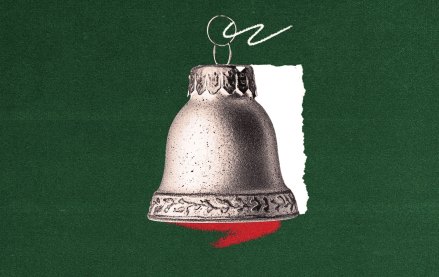
Pandora is betting on AI agents to scale service and emotional selling during the peak holiday season
Pandora is using AI agents to scale customer service and replicate emotional in-store selling online, just as peak season puts pressure on margins and teams.


